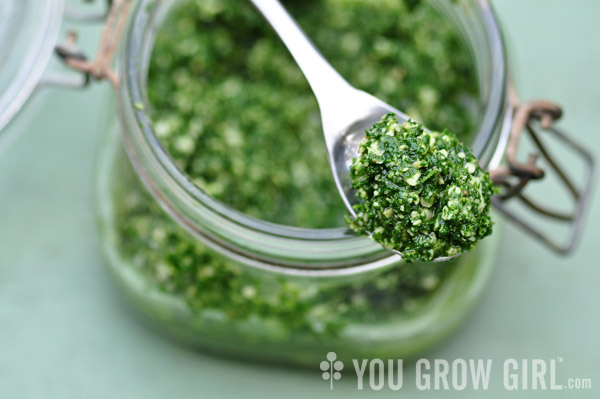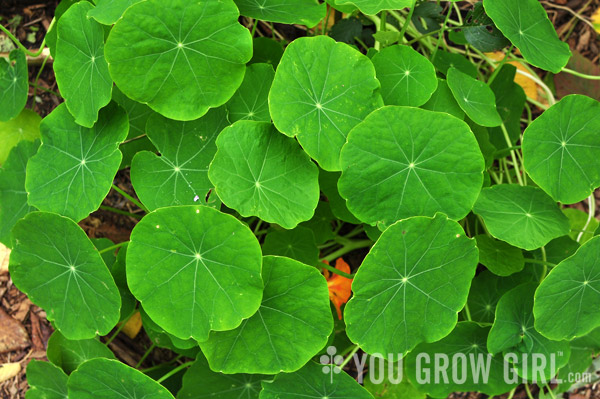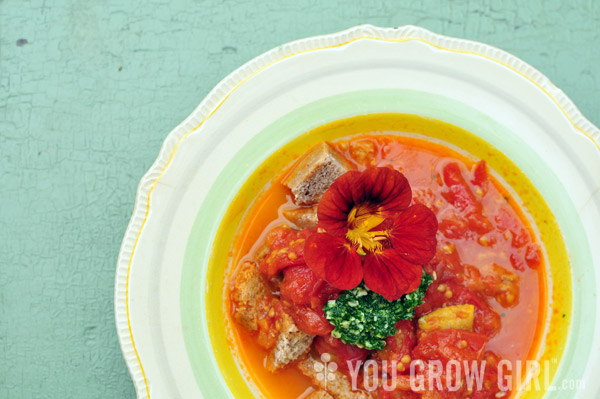
The first hard frost is predicted for this weekend, either Friday or Sunday. I don’t know which because the various weather apps I keep on my phone (and check religiously) are giving conflicting forecasts. At this point I am hustling to clean up for Friday, expecting the worst, but hoping for more time. As is the case ever year, chances are very good that I will be outside in the dark on the night of, my trusty headlamp in place as I scurry about frantically at the last minute to bring in some plant/s I’d originally decided to let go. And then my kitchen floor will be full of pots and Davin will curse my name underneath his breath each morning as he trips over them while attempting to navigate the space between the stove and the fridge in a barely awake state.

Speaking of the headlamp, I was out with it on just last night. The coming hard frost also means a mad rush to preserve herbs and greens such as chives, callaloo (a type of amaranth), and lemon verbena that will be felled by the freeze. I spent most of yesterday doing just that — preserving herbs and greens by drying and freezing, including nasturtium. Some plants suffer a little after a short, hard frost, but bounce back to live on a little longer. But not nasturtium. Once it hits, they’re done for. The whole plant just melts into the soil. One thing I did was freeze nasturtium leaves for a future batch of dolma (stuffed grape leaves, but using nasturtium leaves in the place of grape). The other was make pesto.
I’ve made nasturtium leaf pesto by differing methods, depending on the variety and time of the year. Early season pesto made when the leaves are tender and fresh can be thrown into a food processor without any further preparation. These are the leaves that I’ll throw on a sandwich or toss into a salad,especially when they’re small and bite-sized. However, I find that late season nasturtium leaves are fibrous, tough and difficult to chew through. And they’ve got a really strong bite. I’m talking freshly grated wasabi or white horseradish shooting up your nose and into your face strong. Some people enjoy this sensation, but I don’t find it particularly palatable. For that reason I prefer to shock the larger, older leaves in a pot of boiling water before using them. This process tames the heat and makes for a tender leaf that can be eaten like spinach (you can freeze it too), or as I’ve done here, processed into pesto.

RECIPE: Nasturtium Leaf Pesto
While I have written pesto recipes with exact ingredients, I usually just wing it at home, adding a handful of this and that, tasting as I go and watching to see if the proportions seem right. For that reason I am not giving exact measurements, but estimates. How much of each ingredient comes down to the size and flavour of the nasturtium leaves that you use and your own taste preferences. I find that adding nuts and seeds isn’t just about flavour. They also help grind the plant material and create a pleasant, crunchy texture that contrasts with the softness of the greens and cheese. I often use pepitas because less people seem to be allergic to them than say pinenuts, almonds, or walnuts. They also have a light flavour and are cheap to buy.
Ingredients:
- Handful of pepitas
- Several large nasturtium leaves, stems removed (roughly 20-30, depending on size)
- 2-4 cloves garlic, peeled
- About 1/2-1 cup olive oil
- About 1/4-1/2 cup freshly grated Parmesan cheese
- Salt to taste
On medium-low heat, lightly toast the pepitas in a dry pan. Shake the pan regularly as the seeds warm up and take on a golden brown colour. Set aside to cool.
Place a bowl of very cold water in the sink. Some people use ice cubes, but I find this unnecessary and I never seem to have enough ice cubes in the freezer anyway. To blanch, set a pot of water to boil and once the water is rolling, add a handful of clean nasturtium leaves. Blanch for about 8-5 seconds. How long depends on the size of the leaves and how tough they are. Keep a slotted spoon on hand and push the leaves underneath the water. Oddly enough, nasturtium leaves resemble lily pads and are surprisingly buoyant. Quickly scoop out the wilted leaves and submerge them into the cold water to stop the cooking process. Squeeze the leaves into a ball to remove excess water.
In a food processor, roughly chop the cooled pepitas and garlic. Add the nasturtium leaves and pulse a few times until roughly blended. Drizzle in enough olive oil to create a soft paste and fold the Parmesan and salt in with a spoon or spatula.
The mix will keep in the fridge for a few weeks.
How to Use: This pesto is great on sandwiches, baked potatoes, pasta, or as a side condiment with meals. Mix a dollop with mayo to make an aioli of sorts. I added a scoop to last night’s batch of Tomato and Sage Bread Soup.
I am delighted to know someone else is using Nasturtium leaves as pesto. They remind me so much of arugula, how could one not experiment? My biggest question: where did you acquire seed for your callaloo? I tried it (about five times) in Jamaica and found it to be one of my favorite greens, but can’t seem to find a source. I’d love to grow my own…
http://www.rareseeds.com/green-calaloo-amaranth/
I am fortunate in that a garden shop very near to my home sells callaloo transplants in the spring. Since then the plants have self-seeded on their own. In fact, I was over-run with babies this year.
Wow! I’m so excited to find out I can make pesto from nasturtium leaves! I eat the blooms in salad but never realized the leaves were okay too :)
I was just looking at my nasturtiums tonight. We’re going to have a hard frost soon. I shall pluck them all and make pesto this weekend. Thank you!!
I hope you got the chance to make it Jennifer. As I mentioned below, I harvested the remaining leaves from my garden just before the frost hit.
My large, pillowy ‘Copper Sunset’ Nasturtiums were frosted last evening ! Drats.
I was busy bringing in potted tender plants and covering other things in Reemay and failed to read this post.
You have so many great ideas, Gayla!
Next year! I made one last batch this weekend before the hard frost hit. I harvested every last leaf.
Oh this is just perfect! I always have so many nasturtiums and only like a couple of leaves and flowers in my salad, I never knew I could use them in pesto. I will try it this weekend and let you know what the housemates think!
Gayla – have you tried pickling the seed pods when they are still green? They are spicy and have a nice texture. I use them like capers – in fact they are often referred to as “poor man’s capers”. As a Southern California native I so admire the efforts of you cold weather gardeners. I take my own zone less for granted after reading about the extra efforts you all have to exert.
Just picked some, can’t wait to try it.
I have all your books and love them, but I’m ready for one with only your recipes and methods of preserving for winter. You have such great ideas. It would be great to have all that info in one resource for quick access. Any plans?
At the school garden I used to work at the children loved this. They would pick and eat it onsite. Happy Gardening.